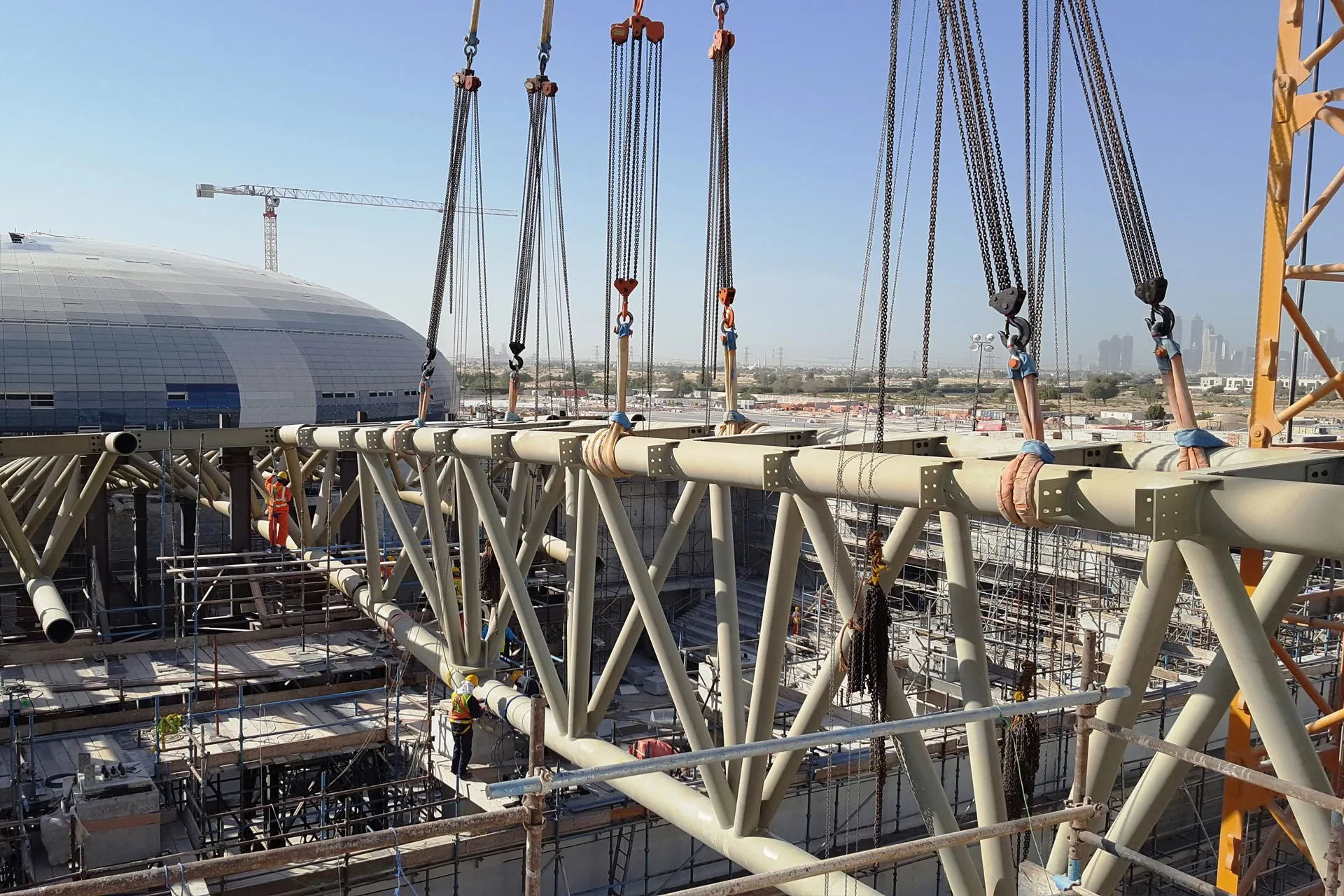Search results based on Steels & Metals Construction
What do mega structures like bridges, aircraft, ships, stadiums and commercial centers, schools, houses, warehouses, and buildings have in common? It is a good design of steel structures. A structure is defined as a body or a combination of pieces of rigid bodies in space that form a fitness system for supporting loads and resisting bending moments. In structural engineering, a steel structure is composed of structural members usually made of steel, with standard cross-sectional profiles and standards of chemical composition and mechanical properties.
Services:
- Steels & Metals Construction
- Plumbing Maintenance
Services:
- Concrete Contractors
- Steels & Metals Construction
Services:
- Landscape
- Steels & Metals Construction
- Environmental Consulting
Services:
- Building Material Suppliers
- Steels & Metals Construction
- Locksmiths
- Tiles, Porcelain & Mosaics
- Wooden Products
- Gypsum Products
- Accessories
- Kitchen & Bathroom
- Ironmongery
- Roofing System
- Aluminum
Services:
- Steels & Metals Construction
- Steel & Metal Fabrication
- Ironmongery
Gold Souk, Al Khor st Gold Center Building - Dubai
Services:
- Steels & Metals Construction
Services:
- Steels & Metals Construction
Services:
- Steels & Metals Construction
- Structural Engineer
Services:
- Steels & Metals Construction
Services:
- Steels & Metals Construction
Currently, there are two most common methods in the design of steel structures: Allowable Strength Design (ASD) also known as Working Stress Design (WSD) is the practice which entails a civil engineer that the stresses imposed on the structures owing to the service load do not exceed the elastic limit. Second is the Load and Resistance Factor Design (LRFD) which uses the principle that strength (resistance) of different materials is scaled down by some factors while the applied loads are scaled up by some factors, and thereby the structural elements are designed using reduced strength and increased loads. Engineers can only create the quality design of steel structures if there are quality products from stainless steel suppliers. To ensure that, we need to start from stainless steel manufacturing first.
Six steps in stainless steel manufacturing
- Melting and Casting - raw materials are placed together and melted in intense heat, in a giant electric furnace for 8 - 12 hours. After melting, the molten steel is cast (molded) into the desired forms. The common shapes include slabs, round or square billets, rods, blooms (rectangular shapes) and tube rounds.
- Forming - the semi-furnished steel shapes is hot rolled (heated and passed through enormous rolls). Blooms and billets are converted to bars and wires. Slabs are formed into strips, sheets or plates. Most of the time the stainless steels are formed into bars since it is most versatile and comes in all grades and sizes.
- Heat treatment - the various steel shapes undergo annealing or heat treatment process where the stainless steel manufacturing is heated and cooled in a controlled environment. This is important to relieve the pent up stress in the steel and soften it up to make it more suitable for different applications. Extreme care must be done during this process as the slightest change in temperature can result in a defective product.
- Descaling - This is the removal of the unwanted scales that appear on the steel’s surface during annealing. Pickling is one of the most common descaling processes.
- Cutting - This process is done through mechanical cutting with the aid of guillotine knives, blanking, nibbling, and high-speed blades.
- Finishing - This process ensures a smooth, easier to clean and appealing stainless steel product. This is not only for aesthetic purposes but also for sanitary requirements.
Here in Buildeey, we make sure our stainless steel supplies sell top quality stainless steel manufacturing needed for design of steel structures.









